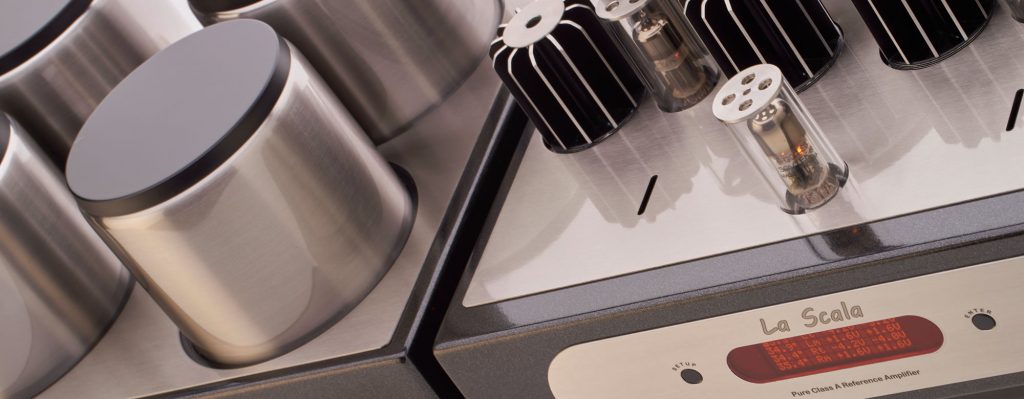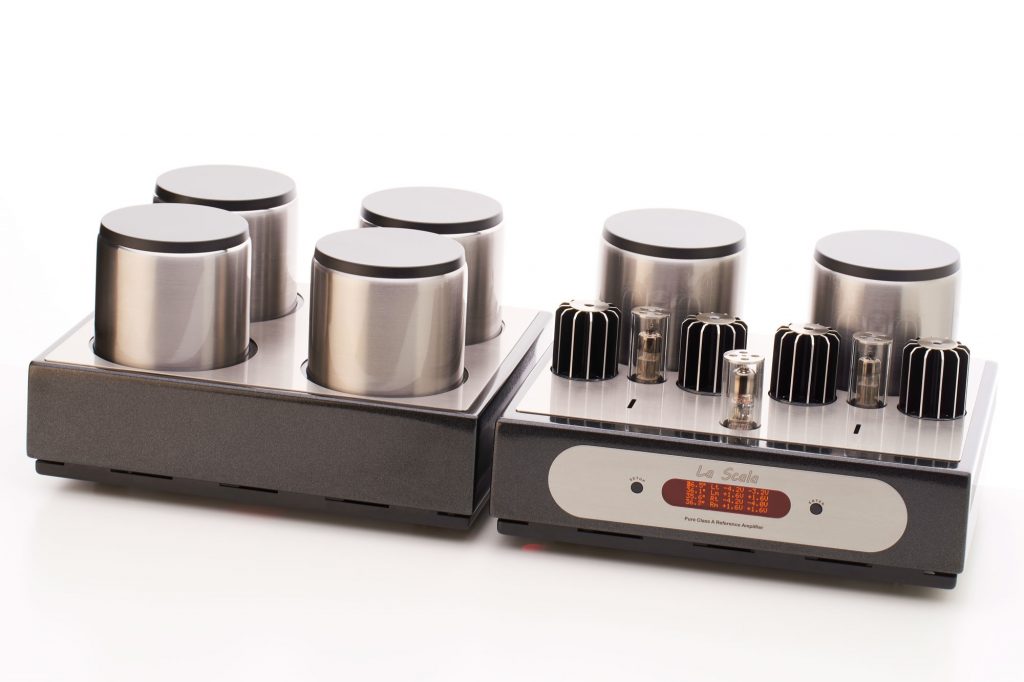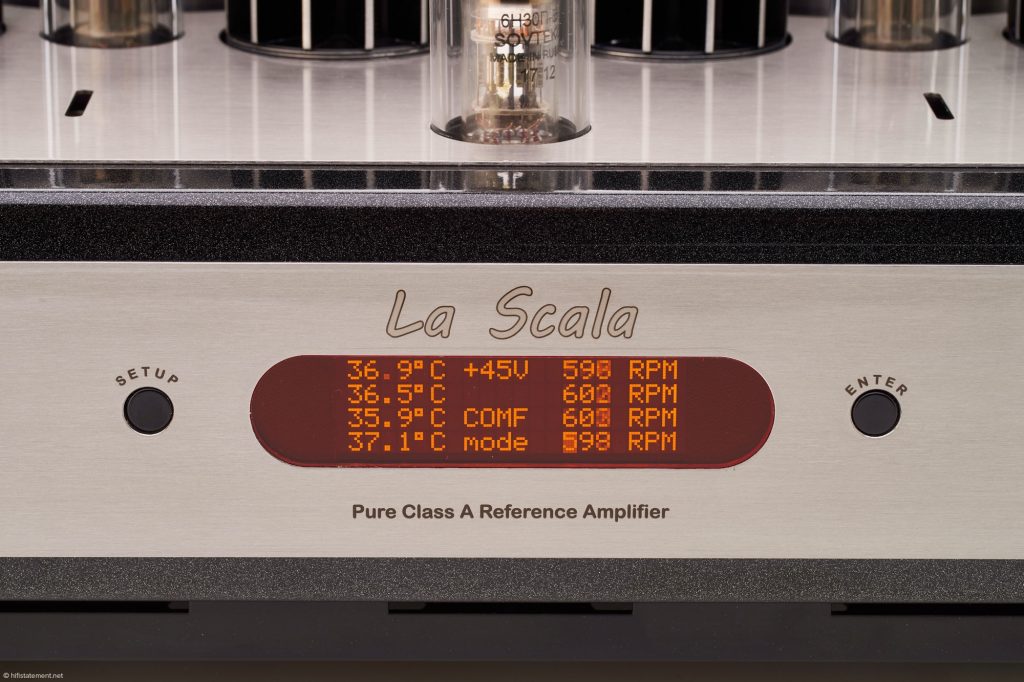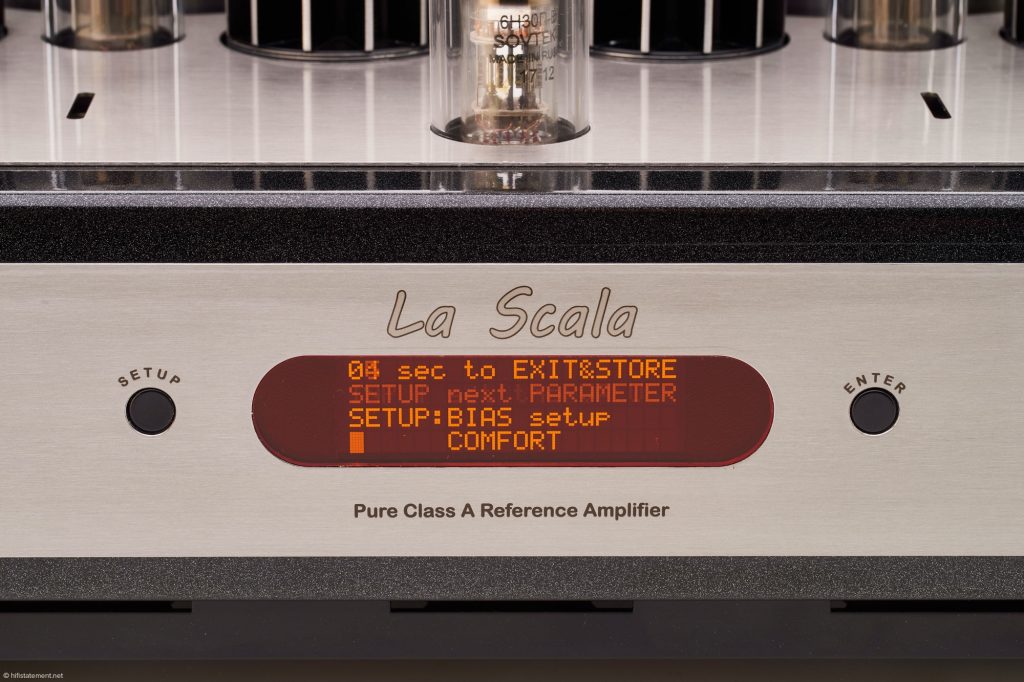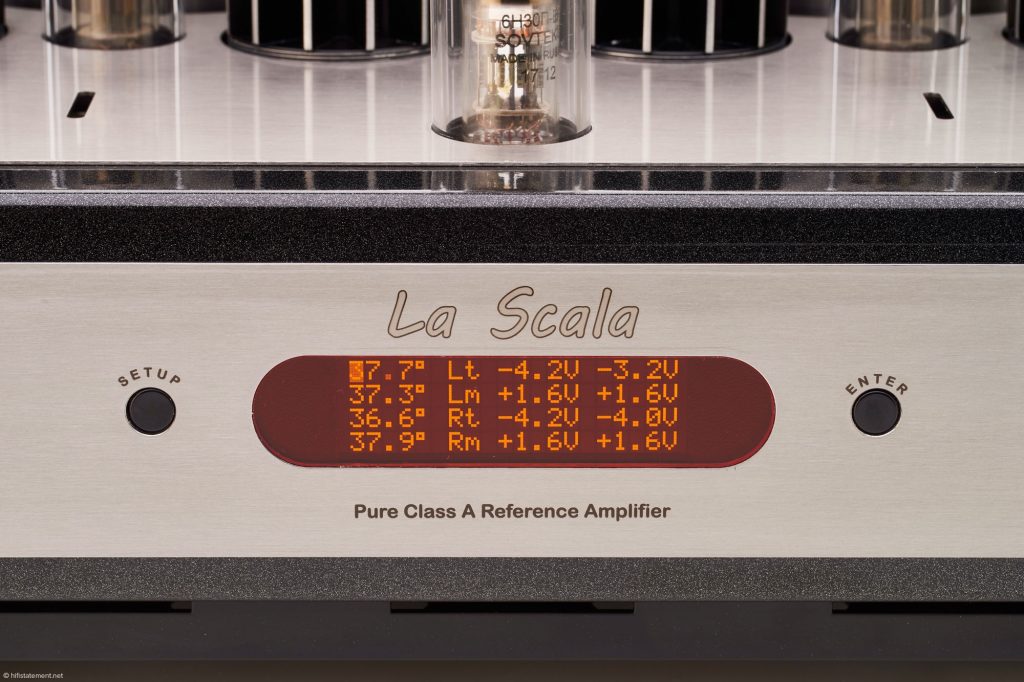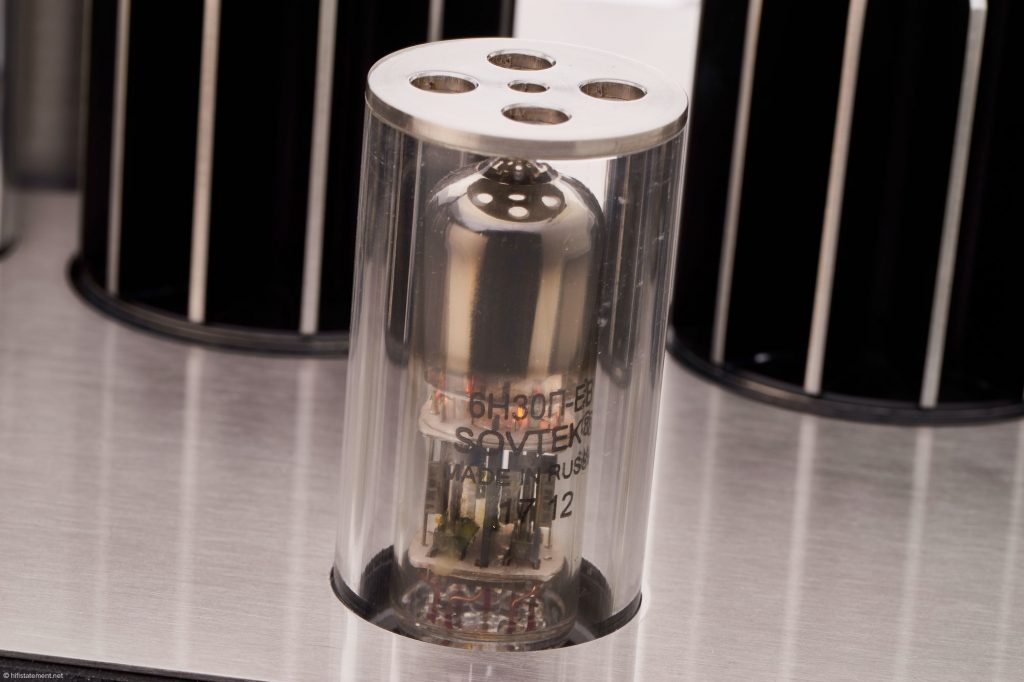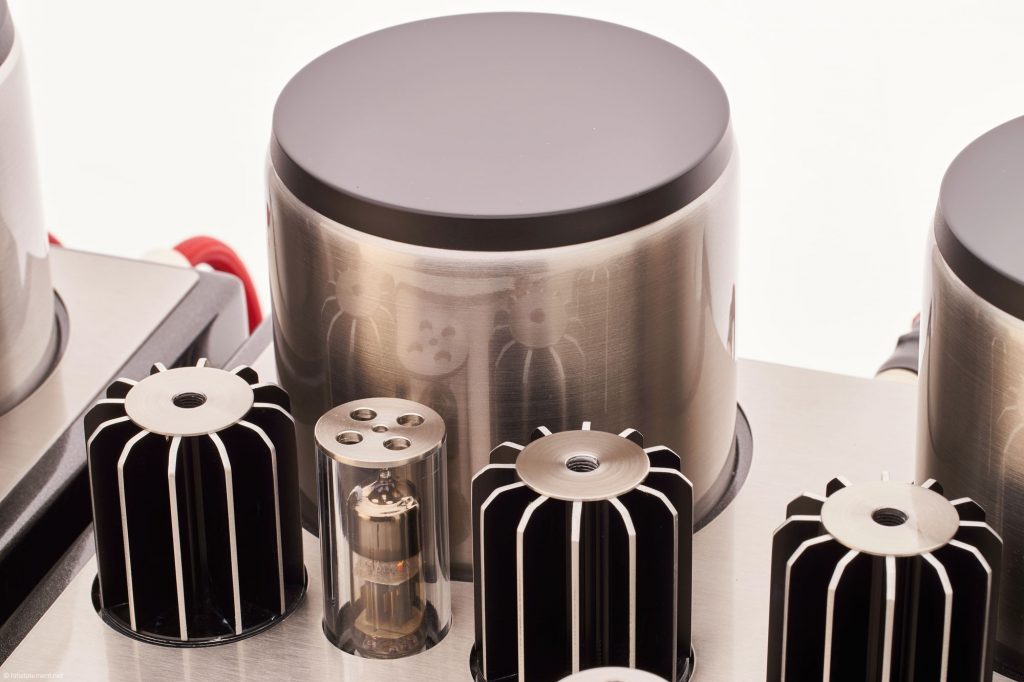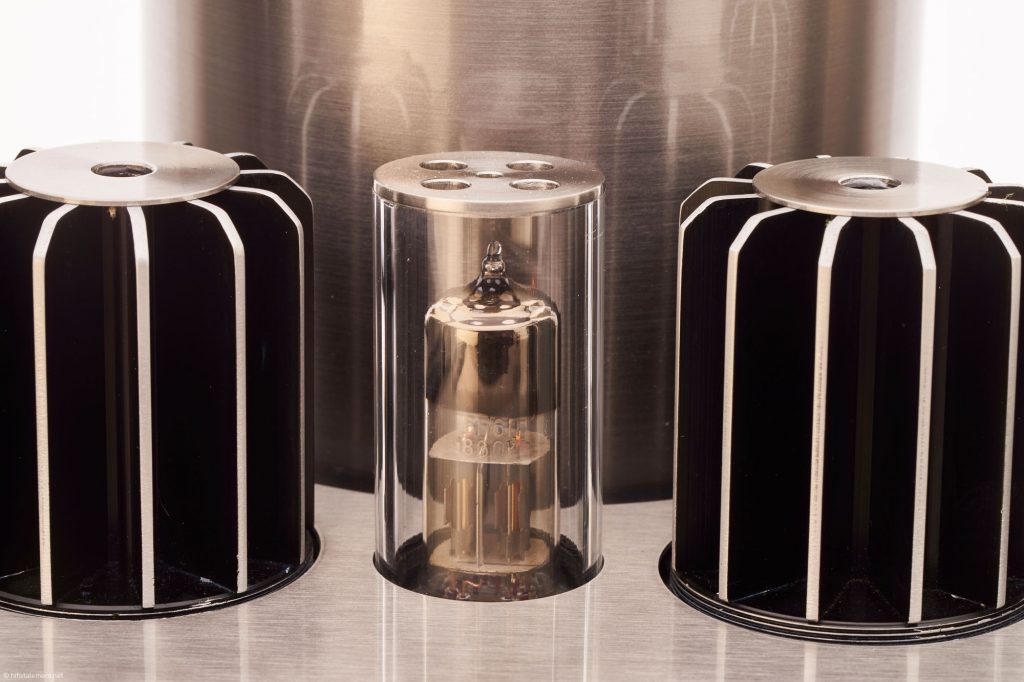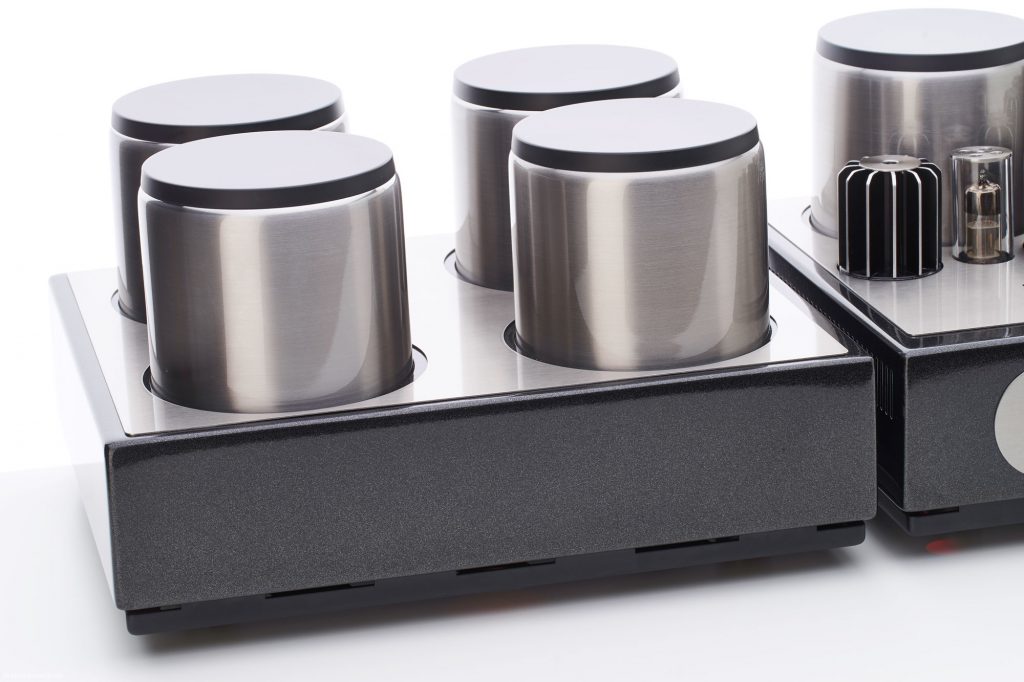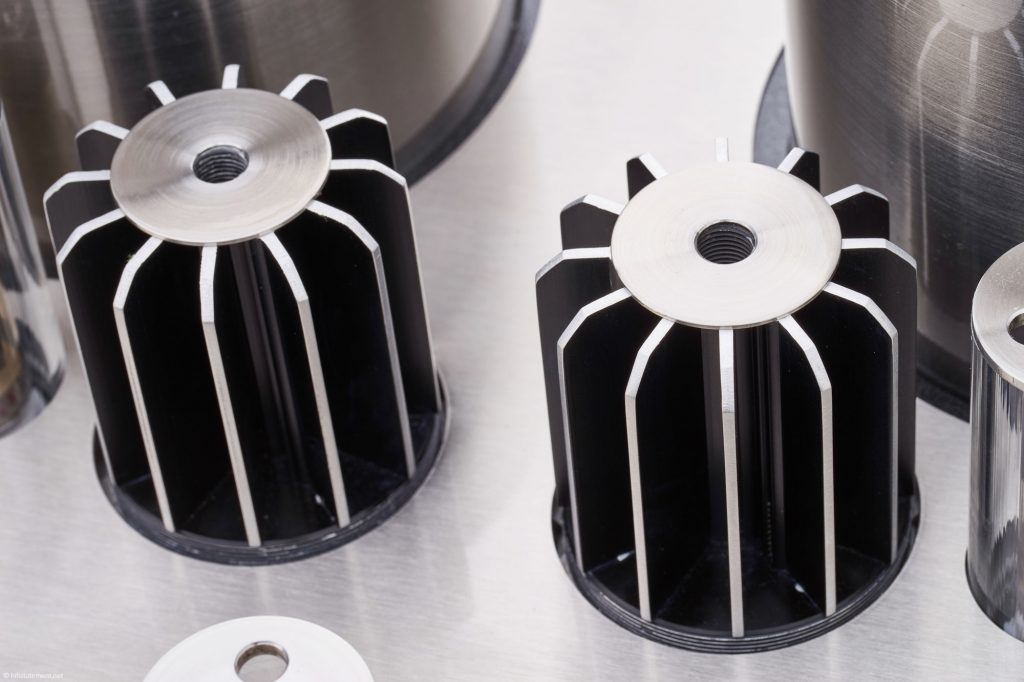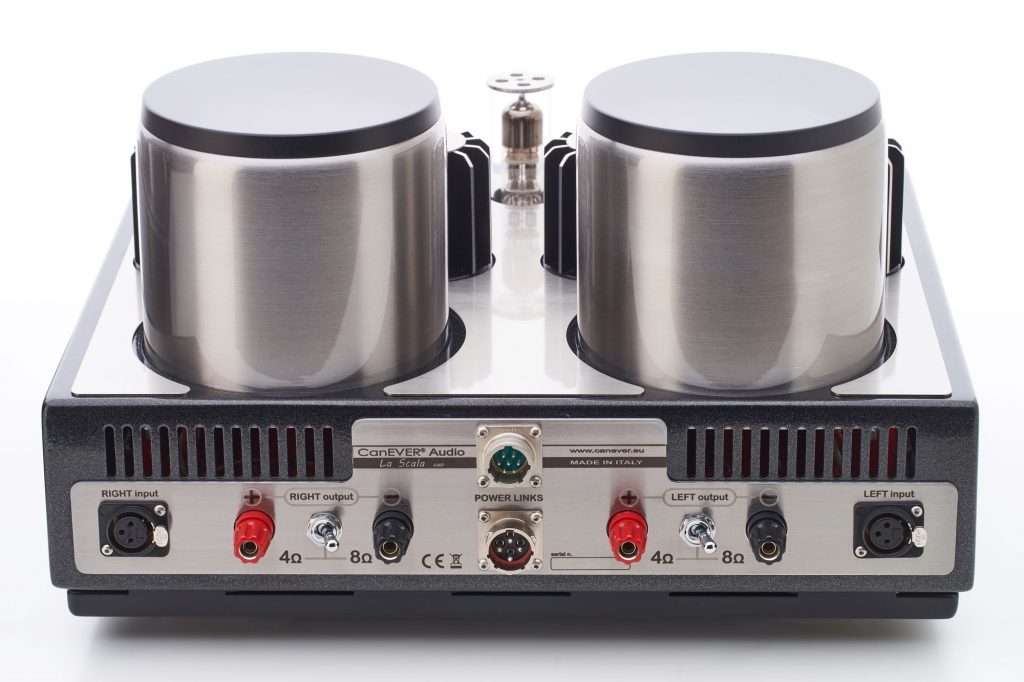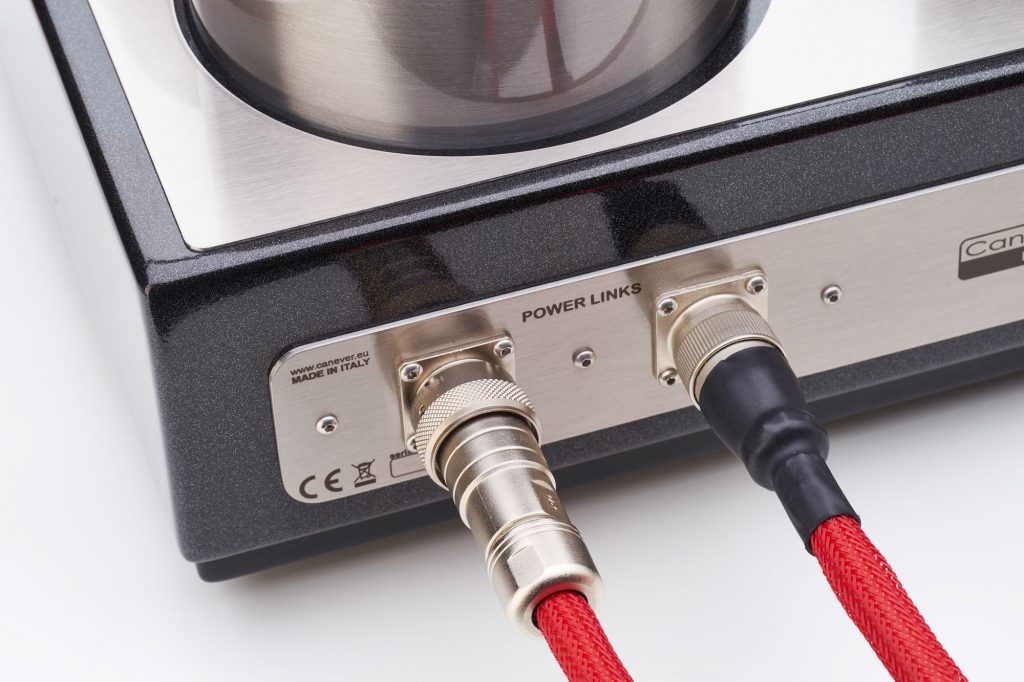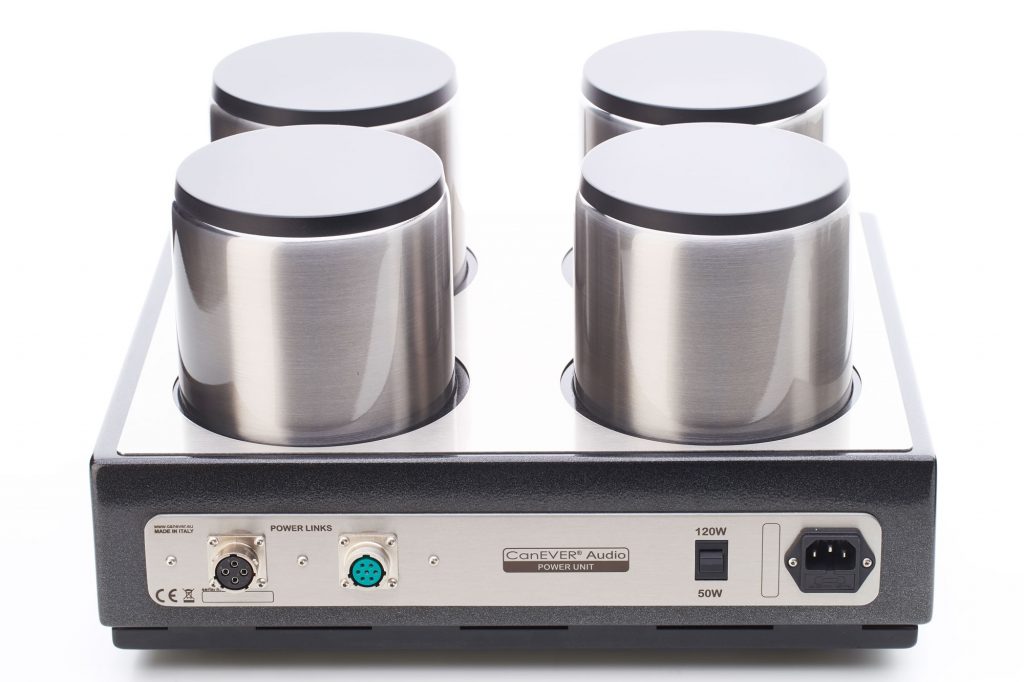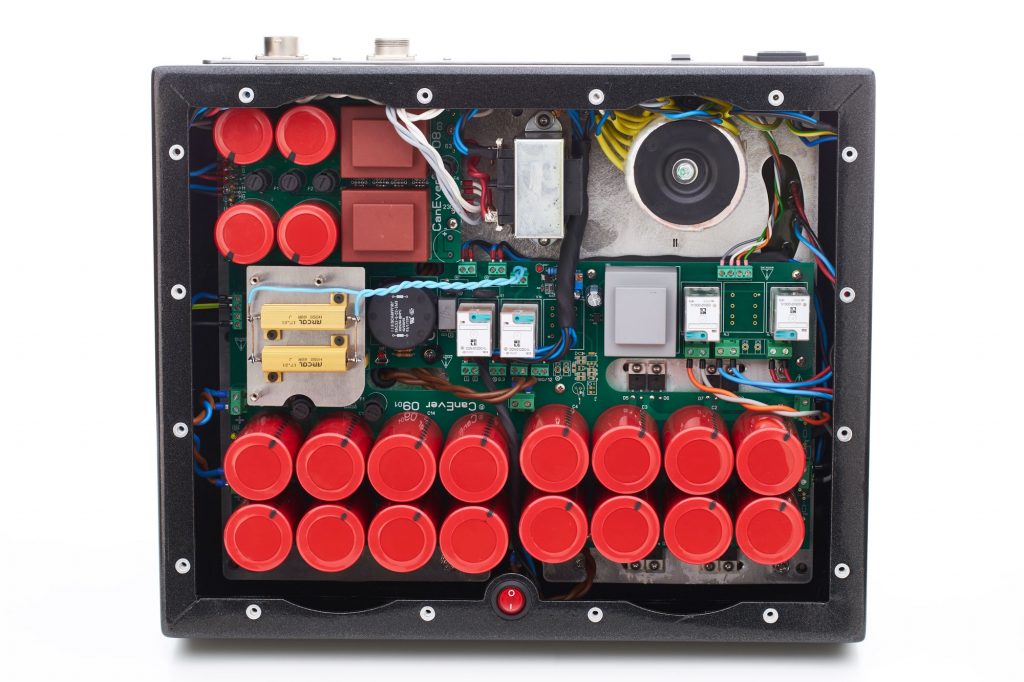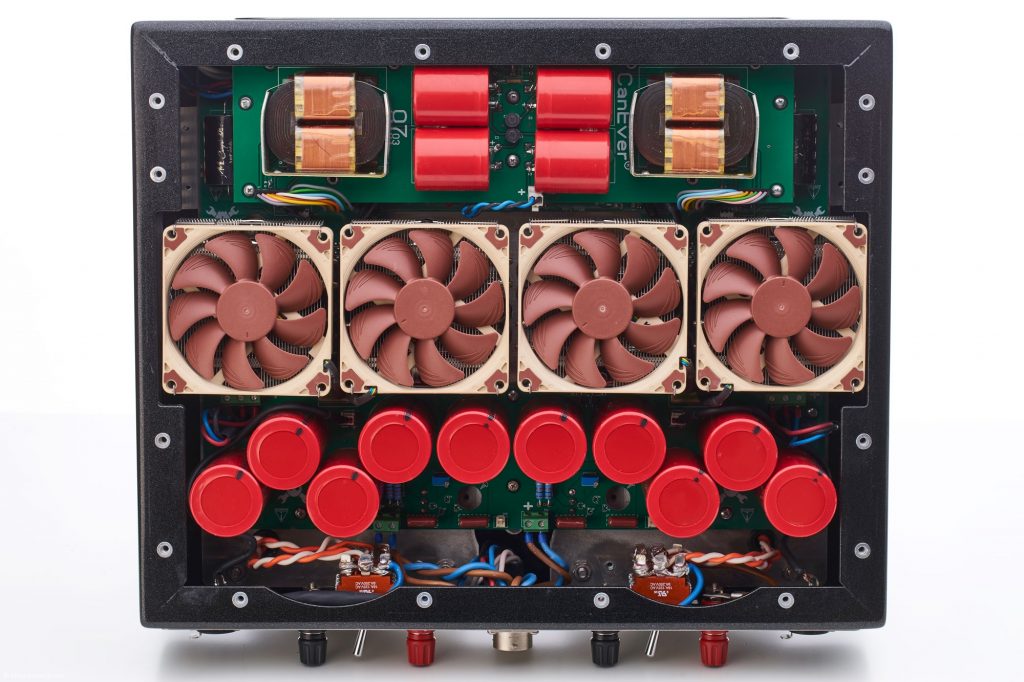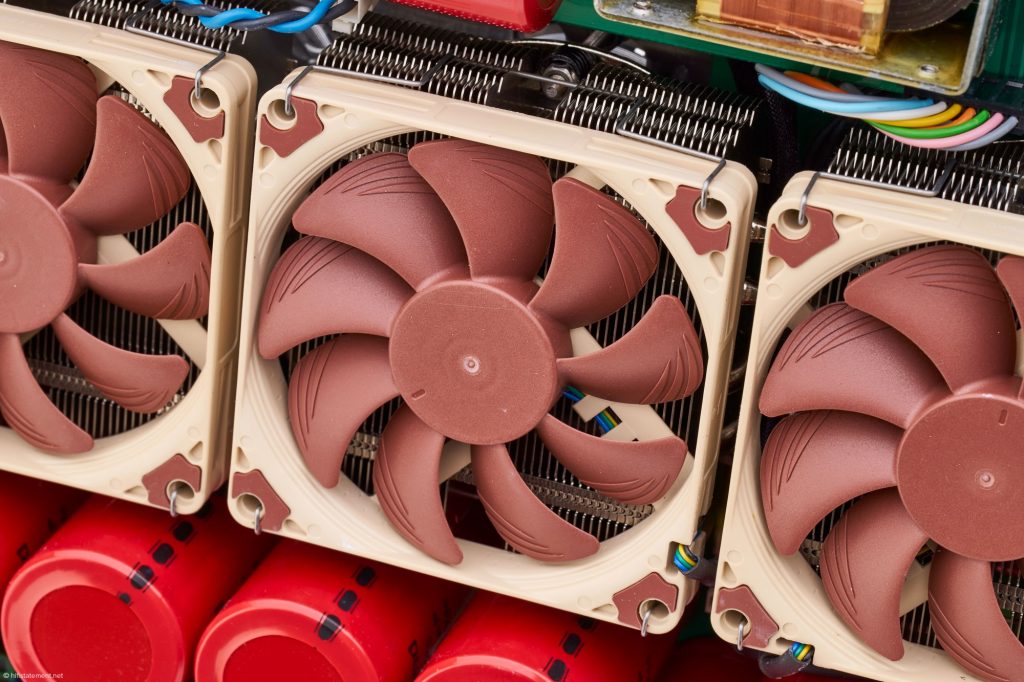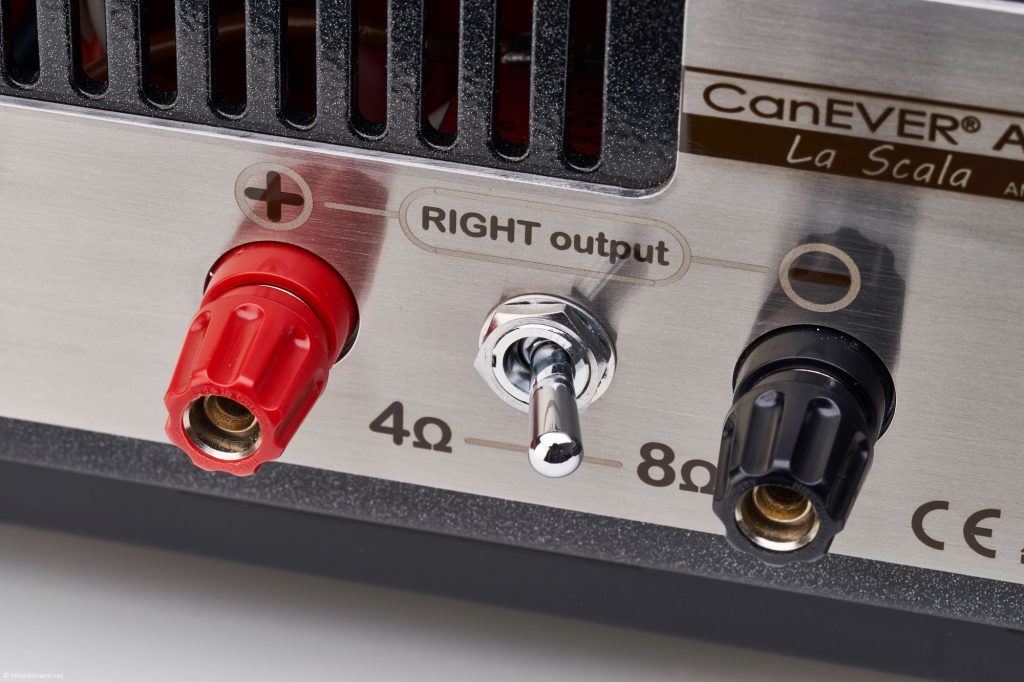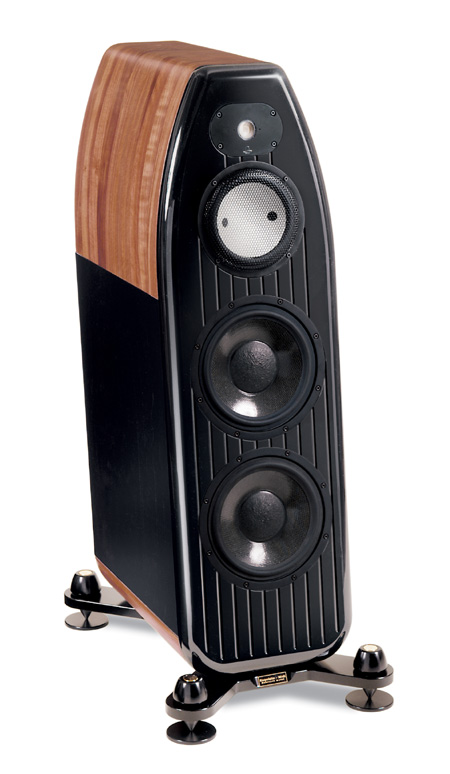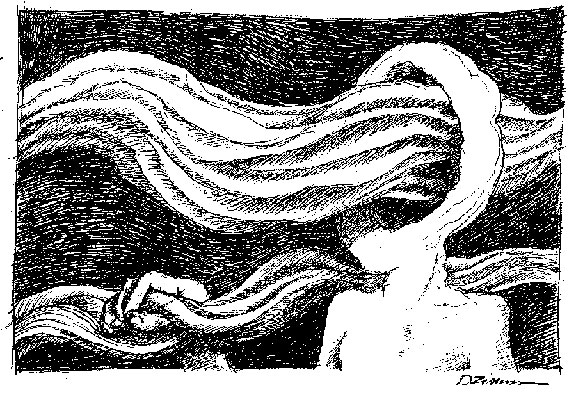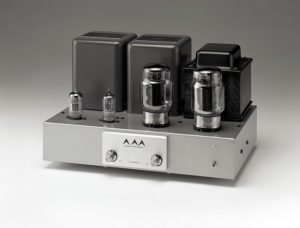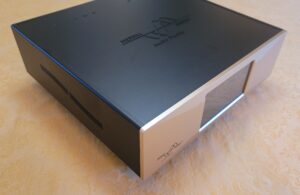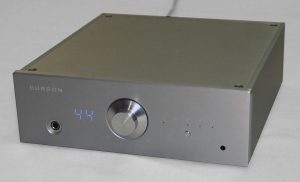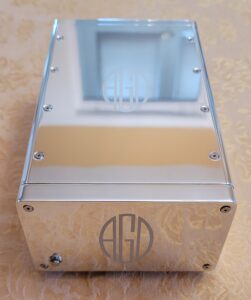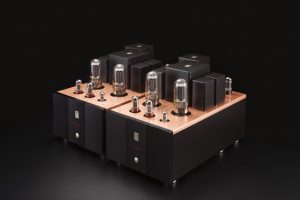This article was written by and contributed to Positive Feedback by Roland Dietl of our affiliate publication in Germany, HiFi Statement.
You may remember the ZeroUnoDAC and the ZeroUno PLUS looking like a small, tubed power amp, which inspired me a lot. Now, CanEVER Audio has expanded its product portfolio through offering a real power amp – the LaScala, beside which both ZeroUnos looks really dainty.
The story started at the beginning of 2017 when I met Mario Canever and Rainer Israel from CanEVER Audio during a business lunch. Back then, both presented the ZeroUno PLUS to me. During that meeting, Mario Canever mentioned that he was working on the development of a power amp as well. I commented that there are a lot of power amps out there on the market already, a view with which he agreed, but then added that he was thinking about a somewhat different type of design that wasn't the usual. The concept that he presented sounded so venturesome to me that I could hardly believe it. Now, after more than three years of development, the LaScala Power Amp is a reality and installed in my listening room.
The two-part LaScala Power Amp: The power supply on the left and the amp itself on the right
What is so different about the LaScala Power Amp? In short: everything! First of all, one should know that Mario Canever is a brilliant electronic engineer who, although he has some really unusual ideas in mind, always respects the music to be reproduced. Based on that, Mario has no fear of contact with respect to certain electronic circuits or sorts of components. Rather he uses those guided by the technical demand.
As a result, the LaScala represents a power amp in which no resistors or capacitors are present in the signal path. The signal path itself consists of six individual components only. The circuit is based on a fully-balanced push-pull design without any kind of global feedback loops, which is able to deliver 90W in Pure Class A mode. You might think that this is not possible. But Mario Canever’s answer is, "Yes, we can!"
Now you might wonder how this can work at all. OK, let's have a closer look at the circuit: Right behind the XLR connector, there is a first transformer working as a phase splitter with a ratio of 1:2, producing at its output two signals of even amplitude but 180 degrees out of phase. The following two stages combine a voltage stage based on the very well accepted double triode 6N6 with the current stage based on a pair of MOSFETs running in the push-pull mode as well. So, the workload is consequently assigned: Voltage amplification based on tubes and current amplification based on transistors.
The display, in this case showing the temperature of the four MOSFETs and the current speed of the cooling fans
As the tubes in the voltage stage "see" as load the high and almost resistive input impedance of the following MOSFET stage, they work under perfect conditions. But as those MOSFETs are working on a much different DC voltage level compared to those of the tubes, both stages cannot be connected directly. Usually, those types of stages are connected with capacitors blocking the different DC levels from each other. To avoid capacitors in the signal path, Mario Canever decided to put an interstage transformer as a coupling device in between the voltage stage and the current stage. This solution is rare to find in amplifier designs, but those transformers are known for their ability to transfer the dynamics of the audio signal without loss. On the basis of the high resistive level in this part of the circuit, the interstage transformers (ratio 1:1) have to transfer virtually only voltage, but no current. This transformer is based on a bifilar winding and creates on its secondary side two perfectly symmetric signals with a negligible phase shift across the entire audio bandwidth.
In this part of the menu it is possible to select the bias of the MOSFETs
As the two signals on the output of the interstage transformer based on the bifilar winding are opposite in phase, it is possible to set up the following current stage in a push-pull mode using two MOSFETs of the same type. In usual configurations, it would be necessary to use complementary "N" and "P" type of devices. Unfortunately, those two different types of transistors are never shown in exactly the same specifications. This effect creates unwanted distortions, which need to be eliminated by additional feedback. CanEver Audio uses two lateral n-channel MOSFETs of the latest generation made by EXICON, which have been developed for use in audio amplifiers. Actually, it would be possible to connect the output of the MOSFETs directly to the speakers. To reach an output power of 90 watts in Pure Class A mode, it would be necessary to let several power transistors run in parallel. As Canever Audio wanted to achieve a pure and undistorted Class A power of 90 Watts with only two MOSFETs in push-pull mode per channel—like in a classic tube amp design, there was only one alternative possible: The use of output transformers.
As in this case the MOSFETs "see" the high impedance of the output transformer, the maximum current running through them is limited, which reduces the heat, and therefore a configuration of several MOSFETs running in parallel is avoided. As an additional advantage, the reduced current in the single pair of MOSFETs does not stress the power supply as much as the diodes in the rectifier bridge. As a result, unwanted distortions are reduced again. As an additional advantage, the output transformer avoids the use of big coupling capacitors at the output to cut off (block) the DC from the speakers. Meanwhile, we have learned that CanEVER Audio does not like to use capacitors in the signal path!
In this case, the display shows the temperature together with the BIAS voltage of tubes in the voltage stage – please take note of the exact match of those voltages compared between the left and the right channel
As an attentive reader, you have counted so far three transformers in the very straight signal path of the LaScala Power Amp! During the rise of the transistors back in the Sixties, engineers have been proud of the so-called "ironless" amps, meaning the disuse of complex transformers, which made the former generations of tube amps heavy and expensive to build. To build the kind of output transformer being used inside the LaScala Power Amp is not an easy task. The high power and necessary high bandwidth are demanding specs. At one time, almost all manufacturers were able to wind this kind of transformers, but they did not show a high interest in winding them to the specifications of CanEVER Audio, because the project was threatening to enter a dead end.
Finally, Mario Canever found a specialist for this task in Italy! The owner of this small factory came with years of experience in winding transformers. After several prototypes, it was decided that they would use a special blitz with 200 wires isolated by silk in a special winding scheme. While all basic manufacturing of the transformers as well as the winding itself is done at the site of the supplier, the final drowning and potting of the transformers into the metal pots are done in the house of CanEVER Audio. This way the risk of being copied is avoided.
The double triode 6H30 inside the shunt regulator
As for the phase splitter at the input of the LaScala Power Amp, CanEVER Audio relies on transformers made by LUNDAHL. These transformers are manufactured according to the specs from CanEVER Audio. They come with an input impedance of 50kOhm and deliver a bandwidth of 100kHz. The same is valid for the interstage transformers, which still deliver a bandwidth of 70 kHz. Based on that high bandwidth, the phase shift of the transformers is reduced to a minimum and can be neglected inside the audio band.
Heavy and expensive is not just the amp itself, but the dedicated power supply as well. It is a well-known fact that the performance of an audio amplifier is based on the quality of the power supply. Especially the kind of straightforward electric designs as that of the LaScala Power Amp, which relies heavily on an absolutely stable power supply delivering pure and clean current, as those circuits do not make use of any additional inherent feedback loops to eliminate distortions generated inside the power supply.
In the foreground the double triode 6H6 for the voltage amplification alongside of the cooling devices for the MOSFETs and the big output transformer in the back
Two big power transformers—one for each channel—make sure of reasonable power resources. As rectifiers, special Silicon-Carbide-Diodes are implemented. Those components work extremely fast, and do not produce converting spikes while switching on and off the AC voltage at the secondary side of the main power transformer. In the next step, the DC is passing a costly CLC-filter based on a combination of filtering capacitors and an inductor followed by additional capacitors. The inductor used inside the power supply of the LaScala power amp comes with an inductance of 40 MilliHenry and an internal resistance of only 0.15 Ohm. As in this amp high currents are flowing, the size of the inductors equal the size of big power transformers in usual amplifier designs. The heating power for the tubes inside the voltage stage is managed by an additional shunt regulator based on the double triode 6H30. This triode can be found too in the line stages of several high-end preamps as well as in CD players. It is obvious, that CanEVER Audio takes time to carefully choose the best possible components for the power supply.
Double Triode and devices for heat dissipation in detail
What makes the LaScala Power Amp really special is a separate circuit called the "BIAS Control Circuit." This circuit is responsible for managing all working points inside the amplifier. Active components, no matter which they are tubes or transistors—even when selected carefully—never come with exactly the same specifications. Additionally, the working temperature has an influence on the specs, as well as aging over time. Therefore microprocessor-controlled servo circuits built into the LaScala constantly monitor and adjust all active components inside the different push-pull circuits of the amp. This "BIAS Control Circuit" makes sure that the circuits run in perfect balance in all possible working conditions.
Even as the current stage of the LaScala makes use of output transformers, there is still an enormous amount of heat being created based on the Class A mode the amp is running in. Usually, Pure Class A amps need huge heatsinks to dissipate this heat, and still run extremely hot during operation. Looking at the LaScala Power Amp, only little is seen in terms of heatsinks, although this amp delivers almost 100W in pure Class A mode per channel. Again, Mario Canever shows his ability to "look across the fence." In the electronics industry, there are other areas where a high loss of power generates high temperatures in narrow spaces. And there are solutions available. Inside the LaScala Power Amp, the power MOSFETs are glued like a sandwich in between two very different types of cooling devices. The four visible heatsinks on top of the chassis are mounted directly on one side of the MOSFETs. These heatsinks are standard in some LED applications. They are very effective in producing a vertical airflow, like a chimney. At the downside, each MOSFET is glued to a powerful heat pipe known from the computer industry to cool off the CPUs powerful server systems. Together with the heat pipe itself, there comes an additional fan to further take off the heat and to dissipate the hot air inside the cabinet. As an option, those fans can be switched off using corresponding commands in the setup menu of the LaScala Power Amp. But based on my personal experiences, there is no "sound" possible to detect from this fans even if you move really close to the amp—dead silence!
The power supply is based on a double mono design, including the two power transformers, as well as inductors of the CLC filter
The complete power amp is consequently built in a double mono design. Due to its dimensions and weight, the power supply is built into a separate cabinet. The amp itself comes in a second cabinet of the same size as the power supply. A pair of specially designed cables come with the LaScala to connect both units. Both cables are "foolproof" terminated with connectors, which allow the connection of the power supply and the amp in only one possible manner. The cable based on four pins delivers the voltage for the power transistors, while the cable with the seven pins delivers the high tension for the tubes in the voltage stage, as well as the power for the BIAS Control Unit. The ON/OFF-switch is well hidden under the front edge of the power supply cabinet. At the front of the amplifier cabinet there is a display, and two switches left and right of that display. Both switches allow you to enter the set-up menu of the LaScala, where it is possible to select from different modes show different parameters like temperature, RPM of the fans, BIAS setting etc. at the display.
A view from above at the heat pipes—the hole in the center creates the chimney effect
My recommendation is to leave the factory settings as they are. On the backside of the amp, we find the balanced XLR input connector for both channels, as well as the connectors for the speakers. In between those connectors there is a switch marked "4 Ohm" and "8 Ohm." Which position is "right" is mainly defined by the impedance of the connected speakers. But the final decision with your own speakers should be taken by listening. Both switches can be used during operation.
For the listening test, I connected the LaScala with my preamp, made by Erno Borbely. As a source, I used my DirectStream DAC by PS Audio. As the LaScala comes with XLR connectors only, I configured an RCA/XLR adapter. At first, I feared to create noise based on a potential ground loop. But the connection worked perfect without producing any kind of hum.
The backside of the amp with XLR inputs, connections for the speakers, as well as the two connectors to hook up the power supply
As speakers, I used my JOTA-System, in which the low/midrange drivers run with no low cut, directly connected to the amp. The level between the satellite speakers and the JOTA subwoofer I adjusted carefully with my oscilloscope.
How to start with the description of what I heard then? Let me start like this: The LaScala Power Amp simply sounds stunning, and right now I suffer from the appearance of withdrawal symptoms since this amp is not playing in my system anymore!
The connections on the backside of the power supply
At first, I was really surprised about what the LaScala was able to deliver in the low/midrange of my JOTA system. The tracks from the well-known Eagles album Hell Freezes Over are reproduced with such a crisp and full-bodied bass as I have never heard it before in my system. In principle, the JOTA system reproduces a sound more on the lean side. This character is almost gone listening through the LaScala, while all the cleanness and speed of the reproduction is still intact. Some of the usual prejudices that the use of output transformers may cause a loss in precision in the low-frequency region are turned upside down by listening with the LaScala. I did not think about this for long, and switched to Dee Bridge Waters album Memphis...Yes, I'm ready. In this case, the bass and the drums convinced me with their awesome synchronization that felt like I was listening to the real thing, which is nothing like anything I have ever heard. This created for my personal taste the correct amount of groove. I listened to the complete album and had fun like never before.
At the same time, the LaScala does not at all behave like a pumped-up bodybuilder, but convinces me at any time with fine details and suppleness. As in "Night And Day" or "Fine and Dandy," the old recordings with the Joe Holland Quartett (Joe Holland Quartett The Joe Holland Quartet, Klipsch Tape Project Vol. II - HDTT DSD128 from High Definition Tape Transfers) I discover new details. It is unbelievable, what can be heard on those old but carefully restored recordings! In addition to the exceptional level of detail, there is this additional captivating tonal sleekness, which lets me listen to many of my recordings with great pleasure—especially listening to recordings of classical music performed on historic instruments.
The backside of the power supply
Now let's take the recording of the Haydn Symphony No. 92 with the Freiburger Barock orchestra conducted by René Jacobs. The interpretation of Jakobs in combination with the very close-miked recording up to now left me always with a mixed feeling. On one side I enjoy the extreme transparency of that recording, which offers surprising insights about the internal structure of the symphony. On the other side, I have difficulties with the reproduction of the strings, which tend to sound rough and sometimes even harsh. Since I have heard this orchestra in a live performance, I know that this is not caused by the original instruments. Listening with the LaScala, the strings now have that natural sonic color from low to high frequencies, which I have missed painfully up to now. Please do not get me wrong; what I hear is far from being "softened," combined with a loss of detail. On the contrary: Listening with the La Scala to the "Quintetto No. 4 in Re Maggiore 'Fandango' per Corda e Chitarra," (G. 448) von Luigi Boccherini (Luigi Boccherini: Fandango, Sinfonie & La Musica Notturna Di Madrid: Le Concert Des Nations, Jordi Savall), the interplay between the solo guitar and the orchestra is presented with all the fine nuances possible.
The power supply from inside—large filter capacity and exemplary manufacturing quality
Not surprising at all is the fact that the reproduction of voices especially benefits a lot from the superb tonality of the LaScala. Some time ago in my analog fundus, I discovered again the complete recording of the opera Carmen with the wonderful Leontyne Price and the Wiener Philharmoniker, conducted by Herbert von Karajan (The RCA Opera Treasury 74321 39495 2). The reproduction of the voices, especially those of Leontyne Price by the LaScala, is just phenomenal.
The amp from inside: at the top the interstage Transformers, and below the four heat pipes, including the fans and additional filter capacities
Based on those listening experiences, it is no surprise that the reproduction of the three-dimensional listening space by the LaScala is one of the best I have "seen." That the music is completely carved out from the speakers, and that a deep space is created, one can expect already from the above descriptions. But it is absolutely outstanding how this is performed. In the sound-wise exceptional recording of the Seventh Symphony by Beethoven performed by the Budapest Festival Orchestra (Beethoven, Symphony No. 7, Channel Classics, 96kHz) conducted by Iván Fischer, the LaScala to the left and the right builds up clearly structured walls of the concert hall, which give the reproduction stable boundaries. At the same time, the music radiates from the center of the stage. There is absolutely no doubt about the position and the real size of each individual instrument in the orchestra. And yet, or just because of this fact, the whole orchestras sound "holistic," like one big instrument.
One heat pipe, including the fan in detail
Is it possible to top this? Yes, it is possible, once you find the perfect source to team up with the LaScala. As the guys from CanEVER Audio still had in mind my great favour for the sound of the ZeroUno DAC, they generously lent me one unit of this excellent DAC for the time being, because of this review. Since the ZeroUno DAC with its analog balanced and unbalanced outputs can be used in parallel and the DAC itself can act a preamp, it was the perfect partner to drive the subwoofer of my JOTA system through one pair of outputs and the mid-high satellites via the LaScala using the second pair of output connectors of the DAC. Again I leveled all channels of the system with my oscilloscope. All my comments above are valid for this set up as well!
The switch to adjust the impedance. The connectors for the speaker cables will be exchanged to those of a more "audiophile" standard in the final production.
Please do not expect the typical "tube sound" from this setup. The performance is of high-level musicality, clear up to the highest notes, but never hard or analytic. There is always this fascinating liveliness in the midrange, presenting the music very powerfully, solidly in between the speakers. Listening to the Concierto de Aranjuez from Joaquín Rodrigo in the recording with Pepe Romero and the Orchestra Academy of St. Martin in the Fields conducted by Neville Marriner (Joaquin Rodrigo: Complete Concertos for Guitar and Harp – Philips Classics), there are so many wonderful moments. During the first set, with its powerful rhythm, the hard beaten strings of the guitar are reproduced in great clearness and acting in contrast to the smooth strings of the orchestra. During the slow second set, the meditative dialog between the guitar and the French horns sound mellow and empathetic.
In total, there is a kind of musical flow created, which one can experience on rare occasions only. Everything is being connected in a symbiotic way, which one might call "addicted to harmony." Maybe you now understand better my suffering from what appears to be a sort of withdrawal symptoms, since this amp is not playing in my system anymore!
STATEMENT
Congratulations to CanEVER Audio in Italy: The LaScala is a big hit in every way. In technical aspects, far from the mainstream, and the results in terms of reproduction quality are outstanding! The combination of the ZeroUno DAC and the LaScala Power Amp creates a tonal symbiosis, which might create some sort of addictive quality.
Listening Components
- Computer Intel Core i5 2,5 GHz, 6 GB RAM, Windows 10 with AudiophileOptimizer 2.20, G-Technology 4 TB G| USB-C Drive with HDPLEX 200W Linear-Power Supply, Intel Xeon E3-1225 3,2 GHz, 4 GB RAM, Windows Server 2012R2 with AudiophileOptimizer 2.20, JPLAY USB Card, HDPLEX 200W Linear-Power Supply
- Software: JPlay 6.2, Roon
- Reclocker: 2 x Mutec MC 3+ USB in cascade mode
- DAC: ZeroUno DAC, PS Audio DirectStream DAC
- Preamp: Erno Borbely
- Speakers: Outsider Jota with Velodyne Subwoofer Management System SMS-1
- Cables: van den Hul, JCAT Reference USB, JCAT Reference LAN, Analysis Plus Digital Oval Yellow, AudioQuest Eagle Eye Digital Cable
Factory Data
- Inputs: 1 x Pair of balanced XLR Connectors (Input Impedance55 kΩ)
- Gain: 7dB (optional 14dB)
- Power: 90 Wrms / 180 Wpeak / per Channel
- Dimensions: Amplifier - 415 x 350 x 240 mm (WxDxH). Power Supply - 415 x 350 x 240 mm (WxDxH)
- Weight: Amplifier - 21 kg. Power Supply - 39 kg
- Price 22.500 Euro
CanEVER Audio
Panfilo Castaldi 6
I-30020 Noventa di Piave VENICE
Italy
+39 3357082807
All photographs courtesy of CanEVER Audio




